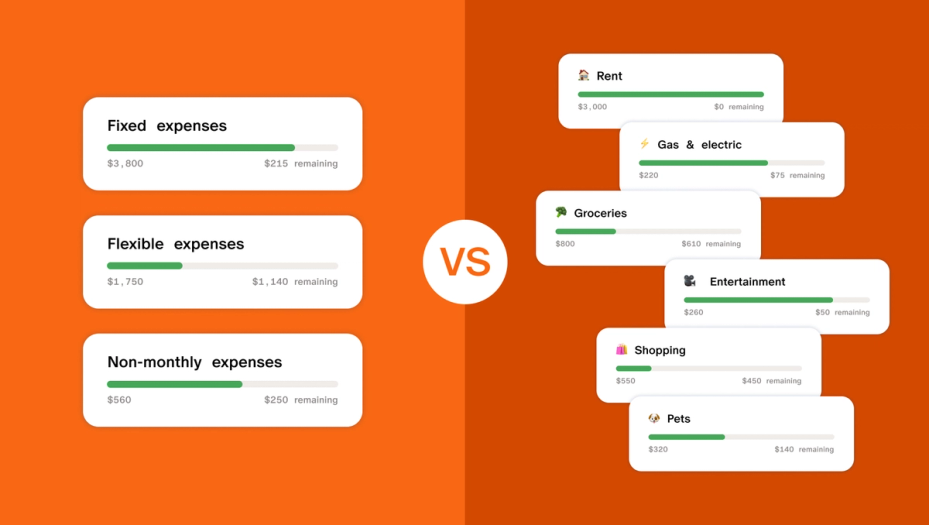If saving for college is on your radar, there are several types of accounts to consider. In order to choose the best option for you, consider how much control you want over the funds, whether you might want to use the funds for something other than college, and how much you anticipate saving for college. You can even use a couple of types of accounts if that works best for you. And although it might be challenging to save enough to fully fund college, every little bit of savings helps. Do what you can when you can.
In this post, we’ll walk through the four most common accounts used for college savings, how each one works, and when each account type might be the best fit. Then, we’ll zoom in on 529 college savings plans which tend to be a great option in most cases. However, the right account choice is based on your situation, so read on to figure out which account is the best fit for you.
529 Plan Account
- TLDR: 529 plans offer tax advantages and enable you to maintain control of the funds. The main potential downside of using a 529 plan is that there are taxes and penalties if funds are used for purposes other than education. If you’re looking to save money specifically for college and get some tax benefits, a 529 savings plan is likely a great option.
- Eligibility: Anyone can open a 529 plan account.
- Control: You, as the owner of the account, have control.
- Flexibility: Funds in a 529 plan can be used for college education. If funds are used for other purposes, you’ll pay taxes and a 10% penalty on earnings. However, you can use up to $10,000 annually towards elementary or secondary education without federal taxes or penalties, but state taxes may be due depending on your state.
- Contribution limits: Contribution limits vary from plan to plan, but are typically in the range of $235,000-$550,000 total per beneficiary.
- Taxes: Although the federal government doesn’t offer any tax benefits on 529 plan contributions, some states offer tax benefits on 529 plan contributions. Earnings grow tax-deferred, and if funds are used for qualified education expenses, withdrawals are tax free. If funds are withdrawn for other purposes, income tax and a 10% federal penalty will be due.
- Impact on financial aid: 529 plans typically have a smaller negative impact on financial aid eligibility.
- Investment options: 529 plans offer a variety of investment options including age-based portfolios which are automatically managed for your child and rebalanced over time based on their age.
- Gift tax: Amounts you contribute to a 529 plan account are considered gifts for gift tax purposes. However, you can contribute up to the annual gift tax exclusion amount ($16,000 per person, $32,000 for a couple in 2022) without having to file a gift tax return or pay any taxes. Contributions over the gift tax exclusion amount don’t necessarily trigger taxes right away, but they do count against your lifetime exemption amount ($12.06 million per person in 2022). Unless you anticipate that you’ll pass away with more than $12.06 million, you likely don’t need to worry about paying gift taxes.
You can also choose to “superfund” a 529 plan account by making a lump sum contribution of up to five times the annual gift tax exclusion amount ($80,000 for an individual in 2022, $160,000 for a married couple) without using up any of your lifetime exemption, but you will need to file Form 709 with your taxes.
Brokerage Account
- TLDR: Brokerage accounts are a flexible way to save for college since you can use the funds for college or any other purpose. With a brokerage account, you retain control of the funds as well. However, they don’t offer the same tax advantages of a 529 plan. If you want to save for college in a flexible way (just in case you want to use the funds for a different purpose), brokerage accounts can be a great option. Or, if you are saving into a 529 plan but don’t want to risk overfunding a 529 plan, a brokerage account can be a great complement to a 529 plan. If you plan to use both a brokerage account and a 529 plan and you’re planning to invest over time, contribute to the 529 in the first several years so that you can maximize potential tax-free growth, and save into a brokerage account in later years.
- Eligibility: Anyone can open a brokerage account.
- Control: You, as the owner of the account, have complete control.
- Flexibility: Funds in a brokerage account can be used for any purpose.
- Contribution limits: There are no contribution limits.
- Taxes: There are no tax benefits on contributions or distributions. Realized capital gains are taxed at short term capital gains rates if held for a year or less, and long term capital gains rates if held for longer than a year.
- Impact on financial aid: Brokerage accounts typically have a smaller negative impact on financial aid eligibility.
- Investment options: The funds within a brokerage account can be invested in a broad range of investments including stocks, bonds, mutual funds and ETFs, but they typically do not offer age-based investment options.
- Gift tax: There are no gift tax implications when opening a brokerage account in your ownership since you are retaining ownership of the funds and not officially gifting them to anyone else.
UGMA/UTMA Accounts: A Uniform Gift to Minors Act (UGMA) account or Uniform Transfer to Minors Act (UTMA) account enables you to transfer money into your child’s ownership and manage it for your child until they reach adulthood.
- TLDR: UGMA/UTMA accounts are a way to gift funds to your child that you can’t take back. When your child reaches adulthood, they have complete control over the funds and can use them for anything they want - college, a motorcycle, starting a business, anything. Losing control of the funds when your child becomes an adult is the primary reason that parents tend not to choose this type of account. That said, if you’re looking for an account that doesn’t require funds to be used for college, and you like the idea of the money belonging to your child when they reach adulthood, an UGMA/UTMA account can be a great option.
- Eligibility: Any adult can open an UGMA/UTMA account for a child.
- Control: If you open an UGMA/UTMA for your child, you have control over the investment choices and use of funds for your child’s benefit until they reach adulthood. Once your child is an adult (which ranges from age 18 to 25 depending on your state), you no longer control the account and your child has complete control over the funds. Your child is not required to use the funds for college and has the freedom to use the funds for any purpose they choose.
- Flexibility: Funds in an UGMA/UTMA account can be used to pay for any expenses to support your child while they’re still a minor. Once your child is an adult, funds can be used for college expenses or any other purpose.
- Contribution limits: UGMA/UTMA accounts do not have contribution limits.
- Taxes: There are no tax benefits on contributions to, or distributions from, UGMA/UTMA accounts. Earnings in the account may be taxed at your child’s tax rate instead of your tax rate, which can be advantageous, but there is a “kiddie tax” rule that limits the amount of earnings in an UGMA/UTMA that can be taxed at your child’s tax rate. Earnings above the kiddie tax limit are taxed at your tax rate.
- Impact on financial aid: UGMA/UTMA accounts are considered assets of the student for financial aid purposes, which means that they have a bigger negative impact on financial aid eligibility.
- Investment options: The funds within an UGMA/UTMA account can be invested in a broad range of investments including stocks, bonds, mutual funds and ETFs, but they typically do not offer age-based investment options.
- Gift tax: Amounts you contribute to an UGMA/UTMA account are considered gifts for gift tax purposes.
Coverdell Education Savings Account
- TLDR: Coverdell ESA accounts have many of the same benefits as a 529 plan, but substantially lower contribution limits ($2,000 annually). In addition, higher income earners aren’t eligible to open Coverdell ESAs. For these reasons, 529 plans tend to be a better option for college savings.
- Eligibility: You can open a Coverdell Education Savings Account (ESA) if your modified adjusted gross income (MAGI) is less than $220,000 for joint filers in 2022. If your MAGI is between $190,000 and $220,000, the amount you can contribute to an ESA is reduced. If you qualify for a Roth IRA, you likely qualify to contribute to an ESA, although the limits are slightly different.
- Control: You, as the parent, control the account, but once the beneficiary turns 30, you’ll have to distribute any remaining balance to your child or roll it to another beneficiary.
- Flexibility: Funds in a Coverdell ESA account can be used for elementary, secondary, and postsecondary education. If funds are used for other purposes, you’ll pay taxes and a 10% penalty on earnings.
- Contribution limits: Contributions are limited to $2,000 annually for ESA accounts. If you plan to save more than $2,000 annually, an ESA is likely not the right fit for you.
- Taxes: There are no tax benefits on contributions. Earnings grow tax-deferred for federal tax purposes. If funds are used for qualified education expenses, withdrawals are federally tax free.
- Impact on financial aid: Coverdell ESA accounts typically have a smaller negative impact on financial aid eligibility.
- Investment options: The funds within a Coverdell ESA account can be invested in a broad range of investments including stocks, bonds, mutual funds and ETFs, but they typically do not offer age-based investment options.
- Gift tax: Amounts you contribute to a Coverdell ESA account are considered gifts for gift tax purposes.
If you’re committed to saving for college, and don’t anticipate using funds for other purposes, a 529 plan tends to be a great choice in most circumstances given its high contribution limits and tax benefits. Once you decide on using a 529 plan, you’ll have the opportunity to select a specific 529 plan from either your home state or another state. Here’s exactly what you need to know to pick the best plan for you.
529 Plan Type - Prepaid Tuition vs. College Savings Plans:
Prepaid tuition plans enable you to purchase future college credits at today’s prices. Purchasing credits directly means that you don’t have to worry about future inflation of college costs or stock market performance because you already own the credits. Although a prepaid tuition plan sounds like a great option in theory, investing the same amount of money in a 529 savings plan typically gives you more purchasing power by the time your child starts college.
In addition, prepaid plans have more restrictions than 529 savings plans. For example, in many prepaid plans, tuition credits are only redeemable at full value at an in-state public university. If your child chooses to go out-of-state or chooses a private school, the amount you get back from a prepaid plan is often limited to your original contribution and a small amount of interest. Prepaid plans can also become underfunded and might even charge more than the going rate for tuition today. Although there are exceptions, prepaid plans are typically not the best option.
In contrast to prepaid 529 plans, 529 savings plans enable you to make contributions that can grow over time depending on market performance and the investment options you choose. Your child can use the funds from a 529 savings plan at almost any college or university in the United States, and even at a limited number of international universities.
State Tax Benefits: Once you’ve chosen whether to use a prepaid 529 plan or a 529 savings plan, it’s important to find out whether your home state offers any tax benefits on contributions. If so, you may be required to use your home state’s 529 plan to take advantage of tax benefits in your home state. However, as of 2022 there are seven states that allow you to contribute to ANY state’s 529 plan and still take a state tax deduction. Those states are Arizona, Arkansas, Kansas, Minnesota, Missouri, Montana, and Pennsylvania.
For example, if you’re a New York taxpayer, you can deduct up to $5,000 ($10,000 for a married couple filing jointly) of your 529 plan contributions on your state tax return, but you have to use one of New York’s 529 plans to qualify. If you save into another state’s plan, you miss out on the NY state tax deduction.
There are also many states that don’t offer any tax benefits on 529 plan contributions (like California and North Carolina). If you live in a state that doesn’t offer tax benefits, you can choose from ANY state’s 529 plan.
Advisor vs. Direct Sold: After narrowing down which states’ plans to consider based on tax benefits, the next step is to decide between an advisor-sold or a direct-sold 529 plan. An advisor-sold plan includes the help of a financial advisor to help you set up your 529 plan and choose investments. Alternatively, you can choose a direct-sold plan and set it up yourself. Fees in advisor-sold plans tend to be significantly higher than direct-sold plans, and given that most 529 plan providers offer online account opening as well as age-based portfolios that make choosing investments for your 529 plan super straightforward, using a direct-sold plan is typically a better, more cost effective option.
Investment Choices and Fees: Once you decide which 529 plan is the best fit for you and you’ve opened your account, the next step is to choose your investments. Virtually all 529 savings plans offer age-based portfolios which are typically a great option since they offer a broadly diversified investment portfolio that will automatically become more conservative over time as your child approaches age 18. Age-based portfolios are also automatically rebalanced which means that you can set it and forget it.
Ongoing Contributions: If you have room in your budget, consider setting up automatic monthly contributions to your 529 plan. Another great way to save is to dedicate a portion of all bonuses, tax refunds, and other windfalls to your 529 plan. Family members can also contribute to your child’s 529 plan and might want to add funds for your child’s birthday or other occasions.
Saving for college is an important goal, and choosing the right account can help you save on taxes and maintain the right level of control and flexibility. But keep in mind that if you don’t have a fully funded Emergency Fund, haven’t started saving for retirement, or you’re still working on paying off high interest debt, those goals are likely more important places to focus first.
If you found this helpful drop us a note at support@monarchmoney.com to let us know what you think we should write about next! Sign up now to view all your accounts in one place and track your goal progress.
No Content can or should be construed as professional advice of any kind (including financial planning, business, employment, investment, accounting, tax, and/or legal advice). The Content is provided for educational purposes only, and is not intended to be a substitute for the professional advice of a financial planner, financial advisor, accountant or otherwise.





